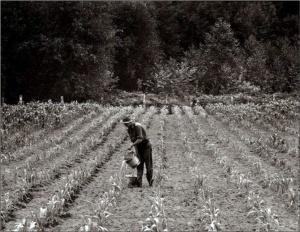It is impossible to go through a day without being reminded of the severe drought conditions affecting the majority of the continental United States. Whether while watching news on the television, reading the newspaper or online news, or shopping for groceries (especially produce), the gloom and doom associated with rising costs of food and loss of revenue attributable to the drought remain front and center. However, if you dig a little deeper into this subject, you will find that this situation is not totally hopeless. In contrast to the millions of acres of unsalvageable corn crops with their abundance of brown leaves withering away and dying in parched soil, there are some fields in the Great Plains that boast healthy vegetation, courtesy of innovative seed companies such as Monsanto and Pioneer.
In response to the drought, farmers are more interested than ever in finding innovative solutions to make crops more resilient. Agricultural research now is directed toward improved farming practices, better plant-breeding techniques and genetic engineering to create plants that are more adaptable to the effects of climate change. Although it is controversial due to cost and unpredictability, genetic engineering holds some promise. To date, experimental strains of corn produced by Monsanto have been successful in surviving and prospering despite the harsh summer conditions. This hybrid corn, DroughtGard, carries a gene that helps it to draw water from the soil more gradually than other varieties of corn. This process promotes water conservation during dry periods. Of note, the DroughtGard hybrid is the only genetically engineered strain that has been approved by the Department of Agriculture.
This new research to create water-resistant strains of corn is a major change in direction for crop scientists, who since the 1920s have focused primarily on improving strains of corn and wheat to yield larger harvests to keep up with the ever-growing population. This new focus is so important because a major issue of climate change is water, whether in terms of droughts or floods. To successfully engineer a strain of corn that is adaptable to the impacts of climate change would amount to a real game changer in this battle.
Scientists predict that with climate change, the intermittent droughts experienced in the United States will increase in frequency. This impending phenomenon has given the task of finding innovative solutions in crop production a renewed urgency. While scientists work to find solutions to crop preservation during adverse weather conditions, it is more important than ever that each of us do our part to protect the environment. Let’s live green, be green.




